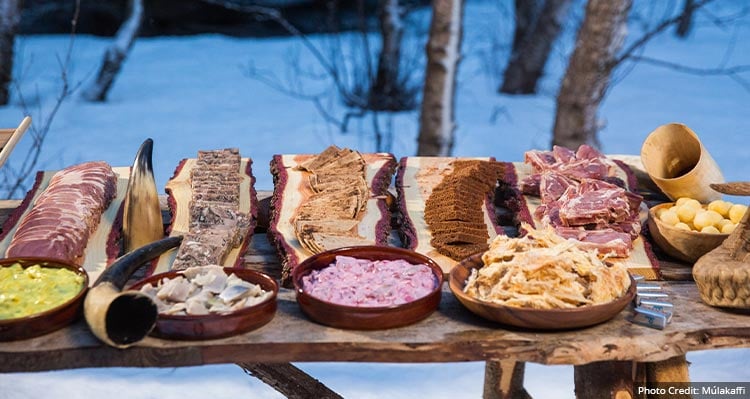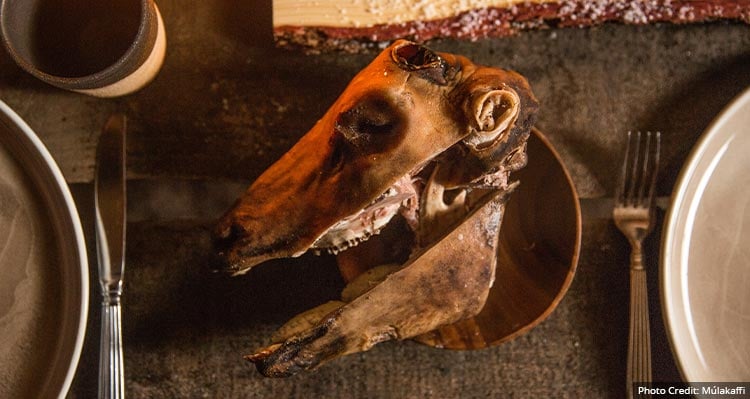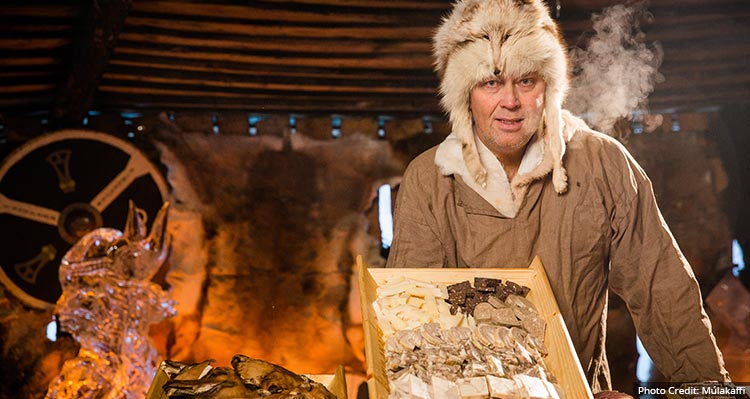A nod to the mythological Norse god Thor, Iceland’s month-long Þorrinn festival is a countrywide fete that celebrates traditional Icelandic food, drink, music, dancing and lore.
If you’re planning on visiting for the winter revelries, here are five facts to help you prepare for Þorrinn:
According to ancient Norse mythology, Þorrinn, pronounced “Thorrinn” in English, was a pagan sacrificial festival. Believed to be associated with Þór (Thor), the god of thunder, Þorrinn was abolished when Christianity was introduced to Iceland. During the second half of the 19th Century, the festival was reinstated as a midwinter celebration to honour Icelandic heritage.

Þorrinn is celebrated during Þorri, the fourth winter month according to the old Norse calendar, which is divided into only two seasons—summer and winter. The festivities begin on bóndadagur (husband's day) that falls on the first Friday after January 19 and ends approximately four weeks later on konudagur (wife’s day). In 2020, the dates for Þorrinn are January 24 through February 23.
Þorrablót feasts are the central element of Þorrinn. Throughout the month, families will gather to share in traditional delicacies, including hákarl (fermented shark’s meat), svið (boiled sheep’s head) and kjötsupa (lamb meat soup). The preferred drink to toast the god of thunder is Iceland’s signature potato-based schnapps Brennivin, which translates loosely to “black death” in English. Traditional music, dancing, games and storytelling complete the evening, which can often last into the early hours of the following morning.

While the festivities are lively and filled with casual cheer, it is customary to wear your finery to a Þorrablót. Of course, expectations may differ depending on where the event is taking place, so if unsure it’s best to check with the hosting party.

Many local restaurants harness the spirit of the season by adding special dishes to their menus. At Kaffi Grandi in FlyOver Iceland, you can sample traditional herring, smoked lamb, dried fish and þorra-beer during the festival. Grocery stores will also stock traditional delicacies for families wishing to celebrate at home. Special organized events—often hosted at large community halls—can be found in most of Iceland’s city centres.
Want to learn more about visiting Iceland in winter? Check out more information here. Bring your appetite!
Insider tips, inspiration and deals - delivered straight to your inbox.